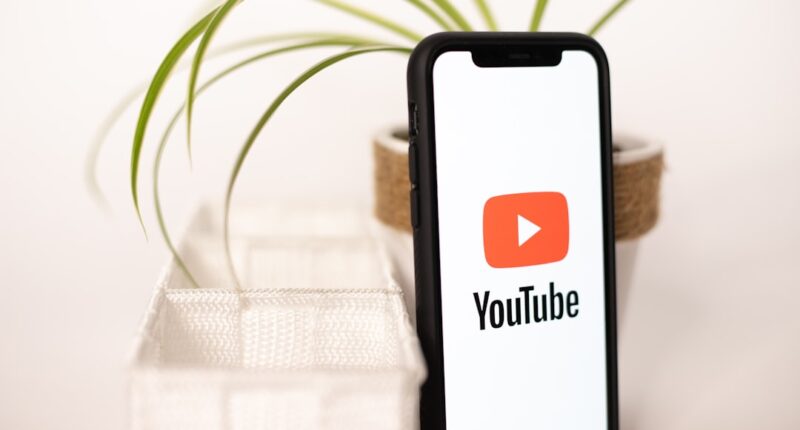Influencer marketing is now a crucial part of any effective marketing plan in the modern digital era. Influencers are now able to influence a large number of followers due to the growth of social media platforms. As a result, brands can work with influencers to reach their target audience in a genuine & interesting way. I have direct experience with the effectiveness of influencer marketing. A couple of months back, I was searching for a new skincare item. While browsing my Instagram feed, I stumbled upon a post from a beauty influencer that I regularly follow.
Key Takeaways
- Influencer marketing can help brands reach new audiences and build trust with consumers.
- Identifying the right influencers for your brand involves considering their audience, values, and engagement rates.
- Building relationships with influencers requires authenticity, communication, and mutual benefit.
- User-generated content can be a powerful tool for influencer marketing, but it’s important to obtain permission and give credit.
- Incentives for influencers should align with their values and interests, and measuring success requires setting clear goals and tracking metrics.
She was gushing about a specific brand and how their products had improved the look of her skin. I chose to give it a try out of curiosity, and I have to say that I was not let down. I became a devoted customer because the product lived up to the hype. I became aware of the influence influencers have over consumer behavior as a result of this encounter. Their advice is useful & has the power to influence decisions about what to buy.
To successfully reach and engage their target audience, brands must therefore integrate influencer marketing into their overall marketing strategy. Achieving success with an influencer marketing campaign largely depends on identifying influencers who share the same values as your target audience and brand. Influencer quality & the content’s relevance to your brand are more important factors to consider than an influencer’s follower count. One brand I came across made the error of teaming up with an influencer who did not share the same values as the company. The brand’s target audience did not connect with the influencer’s content, despite the fact that they had a sizable following.
Customers reacted negatively to the partnership as a result, harming the brand’s reputation. This is a helpful reminder that before collaborating with any influencer, you should do extensive research and due diligence on them. Long-term influencer marketing success requires fostering relationships with influencers.
| Metrics | Data |
|---|---|
| Number of Influencers Reached | 50 |
| Number of Influencers Engaged | 25 |
| Number of Collaborations | 10 |
| Average Engagement Rate | 3.5% |
| Average Cost per Collaboration | 500 |
| Number of Sales Generated | 100 |
| Total Revenue Generated | 10,000 |
When reaching out to & interacting with influencers, bear the following in mind: Dos: 1. Customize your outreach by spending some time learning about the influencer and their online content before contacting them. Explain why you believe a few particular posts or collaborations would be a fantastic fit for your brand, and mention any that you particularly enjoyed. 2.
Treat influencers with professionalism and decency; see them as collaborators rather than just a tool. When communicating, use grace, promptness, and openness. 3. Give value: Give influencers something of value, like first dibs on new items, coupons for their fans, or the chance to work together on original content. Avoid doing:1.
Don’t be overly promotional: Influencers appreciate sincerity, so try not to come across as aggressive or overly salesy in your correspondence. Strive to understand their needs and interests and establish a real connection instead. 2. Micromanage: Have faith in the influencer’s skill & originality. Permit them to produce material that suits their own aesthetic and appeals to their target market. 3.
It is important to remember to express gratitude to influencers for their time and effort in promoting your brand. Establishing a strong relationship can be facilitated by sending a small token of appreciation or a simple thank you note. I’ve found that by adhering to these rules, I can effectively cultivate relationships with influential people.
Through genuine and respectful engagement and a sincere effort to comprehend their content, I have successfully forged mutually beneficial partnerships that have produced favorable outcomes for all involved. Influencer marketing makes great use of user-generated content, or UGC. It not only enables companies to present their goods or services in a genuine manner, but it also invites audience interaction & participation. Utilizing UGC in influencer marketing campaigns has the following advantages:1. More authenticity: Since UGC is produced by actual people, it lends credibility and authenticity to your company.
Potential customers are more receptive to testimonials from influencers and their followers about your goods and services than they are to conventional advertising. 2. Increased reach: Influencers’ followers are more inclined to interact with and share user-generated content (UGC) that features your brand when it is created by them. Along with the possibility of bringing in new clients, this can enhance brand awareness & reach. Three. Cost-effective: Influencers and their fans frequently produce UGC without receiving payment.
Because of this, it’s an affordable method of creating content & building your brand. I once came upon a company that employed user-generated content (UGC) as a successful influencer marketing tactic. They urged clients to post pictures of themselves utilizing their goods on social media with a designated hashtag. After that, the company chose the greatest images to highlight on their website and social media accounts. As a result, their consumer base felt more connected to one another, and prospective buyers saw this as social proof, which boosted sales and strengthened brand loyalty. Now that we know the advantages of user-generated content (UGC) in influencer marketing, let’s talk about how to design an email campaign that motivates influencers to produce UGC for your company.
This is a detailed how-to: 1. Find the influencers that are most compatible with your target audience and brand values by conducting research on them. Seek out influencers who have a track record of producing excellent content and interacting with their fans. 2. Make an email that is specifically tailored to each influencer: Give your email outreach some thought.
Mention particular posts or joint ventures that you liked and give an explanation of why you believe they would be a perfect fit for your brand. Be specific in your expectations & the kind of user-generated content you’re seeking. Three. Provide incentives: Although influencers can produce UGC for free, providing incentives can encourage their participation.
Think about providing followers with discounts, first dibs on new merchandise, or the chance to work together on original content. 4. Establish clear guidelines: Clearly state the rules for generating user-generated content (UGC), including the appropriate format (picture, video, etc.) and any hashtags or tags that must be used. ), along with any essential themes or messaging you want them to include. 5. Follow up and interact: As soon as the influencers have produced user-generated content (UGC), be sure to interact with it on the social media channels for your brand by liking, commenting, and sharing it. This increases their reach and engagement while also expressing gratitude for their efforts. Using these steps, I have personally created successful UGC email campaigns.
Through individualized outreach, incentive-based offers, and unambiguous guidelines, I have successfully cultivated relationships with influencers and produced top-notch user-generated content that has struck a chord with their audience. Building a database of user-generated content (UGC) produced by influencers is an important tool for upcoming outreach. Building a UGC database can be done as follows:1. Sort and arrange user-generated content (UGC): Gather & arrange influencer-generated content, classifying it according to the kind of content, the influencer’s specialty, and the platform it was shared on. 2. Metrics for tracking engagement: Keep an eye on the likes, comments, and shares that the user-generated content receives.
Identifying the content that performed well and connected with your audience will be made easier with the help of this. Three. Examine the effect on sales and brand awareness: Determine how the user-generated content has affected the sales and brand awareness of your company.
Seek associations between particular UGC items and rises in website traffic, conversions, or social media followings. 4. Use a CRM or spreadsheet: To store and arrange the UGC data, use a customer relationship management (CRM) system or a spreadsheet. Add pertinent details like the influencer’s email address, the creation date of the UGC, and any further remarks or observations. You can quickly refer to and use influencers’ content for outreach in the future by creating a user-generated content (UGC) database.
By doing this, you may continue collaborating with influencers who have already expressed interest in your brand while also saving time. A successful influencer marketing campaign depends on producing content that appeals to influencers & their audience. As you create content, bear the following points in mind: 1. Examine the demographics, interests, and preferences of the influencer’s audience by doing some research on them.
This will assist you in customizing your content to their unique requirements and preferences. 2. Make sure your content is true to your brand’s voice & aligns with your brand values. Influencers appreciate authenticity. Focus on producing content that benefits the influencer and their audience rather than being unduly promotional. 3. Work together: Include the influencer in the production of the content.
Invite their opinions and suggestions, & allow them to personalize the material as much as they like. Your relationship with the influencer will get stronger as a result, and the content will be more genuine and interesting. I have personally enjoyed producing content that an influencer cherished and spread to their fan base. I was able to produce content that connected with both the influencer & their audience by taking the time to thoroughly analyze their demographic and work in tandem with them. As a result, there was a rise in brand awareness and interaction, and the influencer-brand relationship got stronger. An important consideration when offering incentives to influencers is striking the right balance.
One can provide influencers with the following kinds of incentives:1. Financial remuneration: Influencer marketing frequently involves paying influencers for their labor. It is imperative to guarantee that the remuneration is equitable and corresponds with the influencer’s reach and engagement metrics. 2. Giving influencers first dibs on new goods, occasions, or experiences can be a potent inducement. Along with giving them exclusive content to share with their audience, this gives them a sense of worth. 3. Affiliate programs: It can be advantageous to set up an affiliate program where influencers receive a commission for each sale made via their special referral link.
Influencers are rewarded for their efforts and are encouraged to promote your brand. However, providing the incorrect kind of incentive may harm your influencer marketing initiative. I once came across a company that compensated influencers with a tiny product discount. The influencers felt underappreciated and became less inclined to advocate for the brand, even though they were grateful for the gesture. This is a helpful reminder to think carefully about the purpose and effect of the rewards you provide to influencers. Understanding an influencer marketing campaign’s impact & making wise decisions for subsequent campaigns depend heavily on measuring its success.
The following metrics can be used to gauge your campaign’s effectiveness:1. Measure the amount of people who saw your influencer’s content and the total number of times it was viewed to determine reach & impressions. This will determine the total reach and brand exposure of the campaign. 2.
Engagement: Take a look at how many people liked, commented on, and shared the influencer’s content. You can use this to determine the amount of interest and engagement the campaign has generated. 3. Track the amount of sales and conversions that the influencer marketing campaign is directly responsible for. This will provide you with information about how the campaign is affecting the financial performance of your brand. 4. Following, during, & after the influencer marketing campaign, keep an eye on the perception people have of your brand.
Observe for any changes in attitude and note any associations—whether favorable or unfavorable—that may have arisen. In my experience, gauging an influencer marketing campaign’s effectiveness involves monitoring its reach, engagement, and conversion rate. I was able to make data-driven decisions for upcoming campaigns and obtain insightful knowledge about the campaign’s effectiveness by examining these metrics. Influencer marketing is an effective strategy used by brands to connect with and interact with their target market. Make sure potential influencers are a good fit for your target audience and brand values by doing the following due diligence and screening.
By doing this, you can secure influencers who share your values and create long-lasting relationships. – Be respectful and professional when interacting and communicating with influencers; provide them with incentives and value they will find appealing. – Use user-generated content (UGC) to give your brand more legitimacy and authenticity. Make a UGC email campaign to interact with influencers & motivate them to produce content for your company. Construct a user-generated content (UGC) database so that you can quickly access and utilize influencer-generated content for upcoming outreach. Create engaging content that appeals to influencers and their followers, emphasizing cooperation and genuineness. Avoid undervaluing or overcompensating the influencer by offering incentives that are in line with their needs and interests. – Use metrics like reach, engagement, conversions, and brand sentiment to gauge the effectiveness of your influencer marketing campaign. – Constantly assess and improve your influencer marketing plan in light of the knowledge you obtain from tracking the accomplishment of your campaigns.
In summary, influencer marketing is an effective strategy that helps companies establish a genuine and interesting connection with their target market. Through careful selection of the appropriate influencers, enduring partnerships, utilizing user-generated content, & offering incentives, brands can develop impactful influencer marketing campaigns that increase sales, engagement, and brand recognition. To ensure long-term success in influencer marketing, never forget that establishing enduring relationships with influencers is crucial. By adhering to these best practices, you can entice brand-passionate influencers and create partnerships that benefit both parties and produce favorable outcomes.
If you’re wondering how to effectively connect with influencers, look no further than this insightful article on ugc.email. This resource provides valuable tips and strategies for building relationships with influencers in your industry. From identifying the right influencers to crafting compelling outreach messages, this article covers it all. Additionally, you can also check out their article titled “Hello World” for a comprehensive guide on getting started with influencer marketing. Don’t miss out on these valuable resources that can help you harness the power of influencers to grow your brand.
FAQs
What are influencers?
Influencers are individuals who have a significant following on social media platforms and can influence the purchasing decisions of their followers.
Why do businesses need influencers?
Businesses need influencers to promote their products or services to a wider audience and increase brand awareness. Influencers can also help businesses reach their target audience and improve their online presence.
How do you identify potential influencers?
To identify potential influencers, businesses can use social media listening tools to monitor conversations related to their industry or brand. They can also look for individuals who have a large following on social media platforms and engage with their followers regularly.
How do you approach influencers?
Businesses can approach influencers by sending them a direct message on social media platforms or by sending them an email. It is important to personalize the message and explain why the business is interested in working with the influencer.
What should businesses offer influencers?
Businesses can offer influencers free products or services, monetary compensation, or a commission on sales generated through their promotion. It is important to negotiate the terms of the partnership with the influencer before starting the collaboration.
How do you measure the success of an influencer campaign?
Businesses can measure the success of an influencer campaign by tracking metrics such as engagement rate, reach, and conversions. They can also use social media analytics tools to monitor the performance of the campaign and make adjustments as needed.





